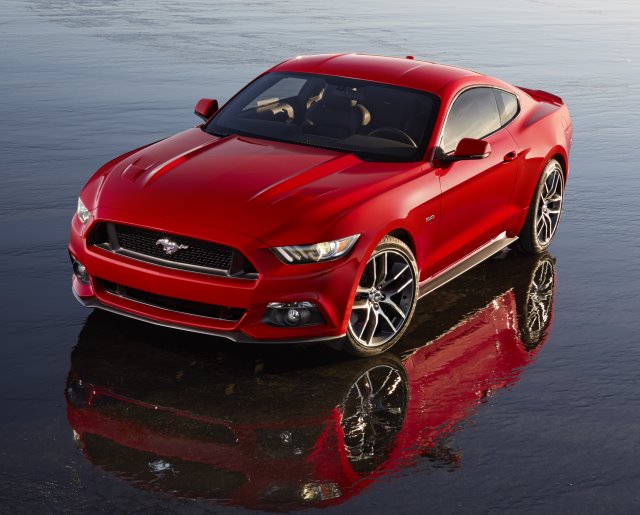

’Stangers—diehard fans of the Ford Mustang—will have already seen it due to leaks of the official photographs half a day ago. Lucire ran the leaked photos on our Facebook page. But now, we can officially talk about the unveiling, in six cities around the world—New York, Dearborn, Michigan, Los Angeles, Shanghai, Sydney and Barcelona—of the 2015 Mustang, codenamed S550, which commemorates the model line’s 50th anniversary.
Executive chairman Bill Ford was present at the Barcelona event, in front of an audience of 2,500 journalists, dealers and Ford employees.
While the Mustang has officially been on sale in Europe and other markets before since the original model was released in New York on April 17, 1964, the 2015 model is the first which will be sold as a “world car”, as part of Ford’s core range.
Ford notes that the Mustang is its most iconic range, and that it is the world’s most-liked vehicle on Facebook. Nine million have been built since the original’s launch.
Stephen Odell, executive vice-president for Ford in Europe, Middle East and Africa, said in a release, ‘The Mustang’s formidable reputation for performance and its iconic status as a symbol of freedom and optimism precedes it even in those parts of the world where the car has never been sold. The new Mustang epitomizes Ford’s aggressive product acceleration; technologically advanced and forward-looking, but without forgetting the heritage that has inspired Ford customers for generations.’
The new model certainly lives up to the promise. It has the classic Mustang proportions and blends them with Ford’s present design language.
The design language has been seen on other global products such as the facelifted B299 Ford Fiesta and the CD391 Ford Fusion, which will be sold in Europe and other markets as the Ford Mondeo. It is an evolution of some of Ford’s earlier design principles.
The grille opening apes that of the Fiesta and Fusion, but appears in a more exaggerated form, with the Mustang horse placed in the centre, as with the original, the Mustang II, and the models dating from the 1994.
There are also shades of the ItalDesign Ford Mustang concept of 2006, which brought some Italianate touches, such as a tapering cabin.
The rear lights also reflect the classic Mustang ideas, with the tri-bar design that also harks back to the original.
Ford has also injected the rear-wheel-drive Mustang with the latest technologies, equipping the pony car for the 2010s and beyond.
Technologies include Ford’s Sync with voice control and eight-inch touchscreen (in Europe), and drivers can adjust between driving modes.
The convertible has an insulated cloth top, which has a sleek profile when folded, according to Ford.
Moray Callum, Ford’s executive director of design for the Americas, said, ‘You only get one chance to make a first impression and when you see this car, you immediately see a Mustang strong and true.’
Inside, the Mustang has an aviation-inspired cockpit, designed for the driver, and there is more space, thanks to a wider cabin and an all-new rear suspension. The cockpit again blends modern and classic: the two large dials hark back to the original, but the look is more geometric and structured.
The boot can now accommodate two golf bags, thanks to the new platform.
The suspension brings Mustang bang up to date. The front has double ball-joint Macpherson struts, while the rear gets rid of its agricultural live rear axle in front of an integral-link independent suspension. The Mustang promises to be a far better drive than the models of old, suiting worldwide markets. Ford’s stability control includes torque vectoring.
Engines are the classic five-litre V8 (with 426 PS and 529 Nm of torque) and a new EcoBoost 2·3-litre four delivering 309 PS and 407 Nm. The automatic model has steering-wheel-mounted shift paddles.—Jack Yan, Publisher




















